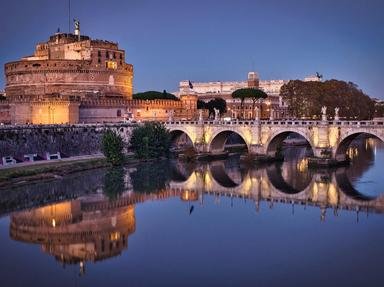Quiz Answer Key and Fun Facts
1. Which of the the gospel authors, was most likely a witness to the Crucifixion?
2. Which two disciples ran to the tomb when Mary Magdalene told them that she had seen the risen Jesus?
3. John the Baptist, being the herald of the Messiah, had no followers after his death.
4. What is the Shroud of Turin said to be?
5. Which of the Council of Seven appointed by the twelve disciples went about Samaria preaching and healing?
6. Which Christian author referred to the Emperor Tiberius as being interested in a report from Pontius Pilate that a new "god" (Jesus) had arisen?
7. Where did Herod Antipas imprison and execute John the Baptist?
8. Where did Pontius Pilate go after his term of office in Judea ended?
9. Rioting in Alexandria between Jews and Greeks continued into the early part of Claudius' reign. He issued two imperial decrees. In the first, what did Claudius declare?
10. Herod Agrippa gained great popularity with the common people by what action?
11. Barnabas, Paul's first companion, was a native of which area?
12. A young girl is named in the gospels who danced for Herod Antipas and asked for the head of John the Baptist at the instigation of her mother, Herodias. What was her name in the gospels?
13. Herod Antipas rejected the daughter of King Aretas when he fell in love with Herodias. What was the name of this young woman?
14. Pontius Pilate's first provocative act was to place images of Tiberius in the temple area in Jerusalem. What unexpected event occurred when he confronted the Jews over the issue?
15. In 34 AD, Tiberius banished Jews from Rome. What sparked this edict?
16. Nicholas Notovich claimed that Jesus visited what country outside Palestine?
17. Caiaphas, the high priest who presided over Jesus' trial, was removed from office by whom?
18. Herod Agrippa was a frequent guest in the house of which reputable Roman matron?
19. Christians during Nero's reign were persecuted, becoming members of "religiones illicitae" (forbidden or illicit religions). By what process did they become enemies of the state?
20. After Claudius executed Messalina for her infidelity and treason, what did he tell the Praetorian Guard?
21. There is a tradition, not appearing in the gospels, that Veronica wiped the bloody, sweaty face of Christ when he fell while carrying his cross to Golgotha. An image of Jesus' face remained on her veil. What is this woman's real name?
22. Who was Nero's first wife?
23. Paul acquired a new traveling companion after he and Barnabas parted ways in Antioch. What was the man who began to accompany Paul on his next missionary journeys?
24. Serious rioting broke out in Jerusalem in 50 AD. Who was the governor of Syria when this occurred?
25. An enigmatic event occurred during the reign of Claudius, a man who had tolerated the Jewish way of life and who respected their right to worship. He expelled the Jews from Rome for what apparent reason?
Source: Author
medvedok
This quiz was reviewed by FunTrivia editor
bloomsby before going online.
Any errors found in FunTrivia content are routinely corrected through our feedback system.


